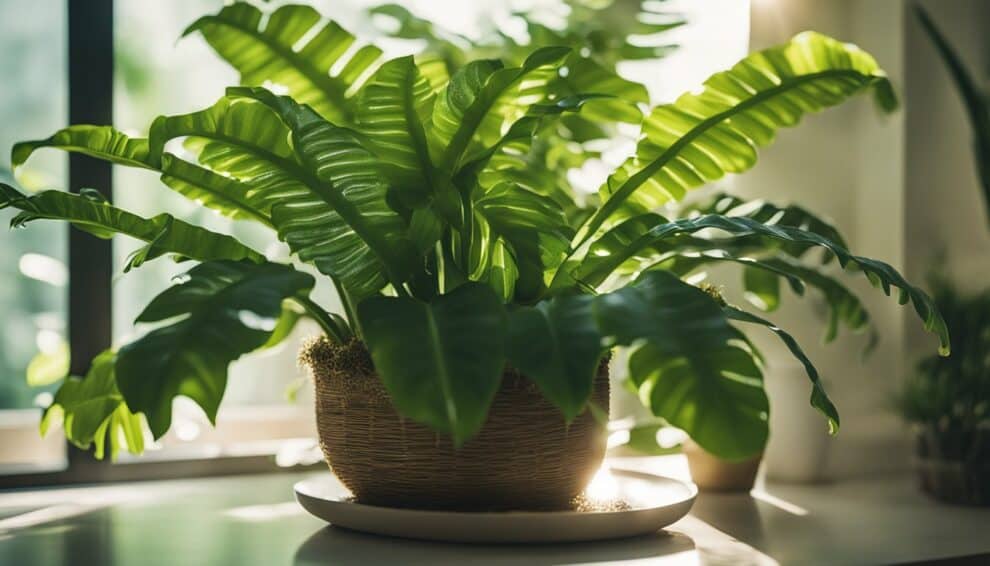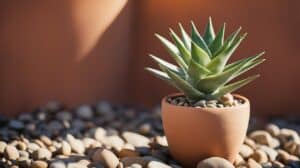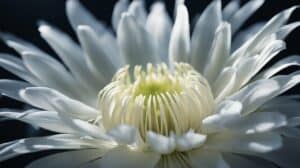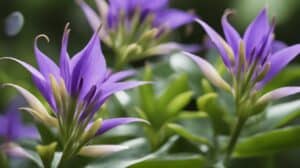Bird’s Nest Fern (Asplenium Nidus) is a popular choice for indoor gardening enthusiasts.
Known for its lush foliage and easy maintenance, this tropical plant can add a touch of greenery to any living space.
However, caring for a Bird’s Nest Fern requires attention to detail and specific conditions to ensure it thrives.

In this article, we will explore the tips and tricks for cultivating a healthy Bird’s Nest Fern.
From choosing the right potting soil to providing adequate light and humidity, we will cover all the essential elements needed to create a lush indoor oasis.
Whether you are a seasoned plant parent or a beginner, these tips will help you keep your Bird’s Nest Fern healthy and vibrant.
So, if you are looking to add a touch of greenery to your home or office, read on to discover how to care for a Bird’s Nest Fern and create a beautiful indoor garden.
Understanding Your Bird’s Nest Fern
Species Overview
The Bird’s Nest Fern, also known as Asplenium Nidus, is a popular houseplant that is native to tropical and subtropical regions around the world.
It is a member of the Aspleniaceae family and is characterized by its large, wavy, and bright green fronds that resemble a bird’s nest.
The plant can grow up to 2 feet tall and 3 feet wide, making it an ideal choice for indoor gardening.
Natural Habitat
The Bird’s Nest Fern is commonly found in the rainforests of Southeast Asia, Australia, and the Pacific Islands.
It is an epiphyte, which means that it grows on other plants, such as trees, without harming them.
The plant is often found growing in the crevices of rocks or on the trunks of trees where it can get the necessary moisture and light to thrive.
In its natural habitat, the Bird’s Nest Fern is exposed to high humidity levels and indirect sunlight.
It prefers a warm and moist environment, which can be replicated indoors by placing it in a bathroom or near a humidifier.
The plant can also tolerate low light conditions, making it a great option for those who have limited natural light in their homes.
Overall, understanding the natural habitat and characteristics of the Bird’s Nest Fern is crucial to providing it with the proper care it needs to thrive indoors.
With the right conditions and care, this plant can add a lush and tropical feel to any indoor oasis.
Creating the Ideal Environment

Creating the ideal environment for a Bird’s Nest Fern is crucial to ensure its growth and lushness.
This section will cover the lighting requirements, temperature and humidity, soil, and potting.
Lighting Requirements
Bird’s Nest Ferns thrive in bright, indirect light. Direct sunlight can scorch the leaves, while too little light can cause stunted growth.
Place the fern in a spot where it can receive bright, indirect light for at least a few hours a day.
If natural light is insufficient, consider using artificial grow lights.
Temperature and Humidity
Bird’s Nest Ferns prefer a warm and humid environment. Keep the fern in a room with a temperature between 60-75°F (15-24°C).
Avoid placing it near drafty windows or air conditioning units. To maintain humidity, mist the leaves regularly or use a humidifier.
Placing a tray of water near the fern can also help increase humidity.
Soil and Potting
Bird’s Nest Ferns prefer well-draining soil that is rich in organic matter. Use a potting mix that contains peat moss, perlite, and vermiculite.
When potting, choose a container that is slightly larger than the root ball. Ensure that the pot has drainage holes to prevent waterlogging.
In summary, creating the ideal environment for a Bird’s Nest Fern involves providing bright, indirect light, warm and humid conditions, and well-draining soil in a properly sized pot.
By following these tips, you can ensure that your Bird’s Nest Fern thrives and creates a lush indoor oasis.
Care and Maintenance

Caring for a Bird’s Nest Fern requires a few simple steps to maintain its lush appearance.
By following these tips, you can ensure that your Asplenium Nidus will thrive in your indoor oasis.
Watering Techniques
Watering is crucial to the health of your Bird’s Nest Fern. Overwatering can lead to root rot, while underwatering can cause the fern to dry out.
It is recommended to water the fern once a week, but this may vary depending on the humidity and temperature of your home.
To water the fern, pour water into the soil until it starts to come out of the drainage holes.
Allow the soil to drain completely before placing the fern back in its saucer.
Avoid getting water on the leaves, as this can cause damage and encourage the growth of mold.
Fertilizing Schedule
Fertilizing your Bird’s Nest Fern can help promote growth and keep it healthy.
It is recommended to fertilize the fern once a month during the growing season (spring and summer).
Use a balanced liquid fertilizer, diluted to half strength, and apply it to the soil.
Avoid fertilizing during the dormant season (fall and winter) as the fern is not actively growing during this time.
Pruning and Cleaning
Pruning and cleaning your Bird’s Nest Fern can help maintain its appearance and prevent the growth of pests and diseases.
Remove any dead or yellowing fronds by cutting them off at the base of the stem. This will also encourage new growth.
Clean the leaves of the fern regularly with a damp cloth to remove any dust or debris.
This will help the fern absorb more light and maintain its lush appearance.
By following these simple care and maintenance tips, you can enjoy a beautiful and healthy Bird’s Nest Fern in your indoor oasis.
Troubleshooting Common Issues

Pest Prevention
Bird’s Nest Ferns are generally pest-free, but they can occasionally attract mealybugs, scale, and spider mites.
To prevent these pests from infesting your fern, make sure to keep the surrounding area clean and free of debris.
You can also use a mild soap and water solution to clean the leaves of the fern, which will help to remove any pests that may be present.
If you do notice pests on your fern, you can use an insecticidal soap or neem oil to treat the problem.
Be sure to follow the instructions on the label carefully.
Disease Management
Bird’s Nest Ferns are susceptible to a few different diseases, including root rot and leaf spot.
To prevent these diseases, make sure to keep the soil moist but not waterlogged, and avoid getting water on the leaves of the fern.
If you notice any signs of disease, such as yellowing or wilting leaves, you should remove the affected leaves and treat the plant with a fungicide.
Be sure to follow the instructions on the label carefully.
Leaf Problems and Solutions
If your Bird’s Nest Fern is not looking as lush as it should be, there may be a problem with the leaves.
One common issue is brown tips on the leaves, which can be caused by dry air or over-fertilization.
To prevent this problem, make sure to keep the air around the fern humid, and avoid fertilizing the plant too often.
If the tips of the leaves have already turned brown, you can trim them off with a pair of clean scissors.
Another common issue is yellowing leaves, which can be caused by overwatering or underwatering.
To prevent this problem, make sure to water the fern regularly, but not too frequently. If the soil feels dry to the touch, it’s time to water the plant.
If the leaves have already turned yellow, you should remove them from the plant.
Frequently Asked Questions

How can I ensure my bird’s nest fern thrives indoors?
To ensure that your bird’s nest fern thrives indoors, make sure to keep it in a warm and humid environment.
The fern prefers temperatures between 60 and 75 degrees Fahrenheit, and humidity levels of at least 50%.
You can increase humidity levels by misting the fern regularly or placing a tray of water near it.
Additionally, make sure to keep the soil moist but not waterlogged, and avoid placing the fern in direct sunlight.
What are the ideal lighting conditions for a bird’s nest fern?
Bird’s nest ferns prefer bright, indirect light.
You can place them near a window that receives filtered light, or use artificial lighting if natural light is not available.
Avoid placing the fern in direct sunlight, as it can scorch the leaves.
How often should I water my bird’s nest fern for optimal growth?
Water your bird’s nest fern when the top inch of soil feels dry to the touch.
The frequency of watering will depend on the temperature, humidity, and lighting conditions in your home.
In general, you can expect to water your fern once or twice a week. However, it’s important to avoid overwatering, as this can lead to root rot.
What type of fertilizer is best for a bird’s nest fern, and how frequently should it be applied?
A balanced, water-soluble fertilizer is best for bird’s nest ferns.
You can apply fertilizer once a month during the growing season (spring and summer), and reduce frequency during the dormant season (fall and winter).
Be careful not to over-fertilize, as this can damage the fern.
How can I tell if my bird’s nest fern is healthy?
A healthy bird’s nest fern will have lush, green leaves and no signs of wilting or discoloration.
You may also notice new growth emerging from the center of the plant.
If the leaves are turning yellow or brown, or if the soil is consistently wet, it may be a sign of overwatering or root rot.
What are common issues with bird’s nest ferns and how can I prevent them?
Common issues with bird’s nest ferns include overwatering, underwatering, and pests such as spider mites or mealybugs.
To prevent these issues, make sure to water your fern only when the top inch of soil feels dry, and avoid placing it in direct sunlight.
You can also inspect your fern regularly for signs of pests, and treat them with insecticidal soap if necessary.














